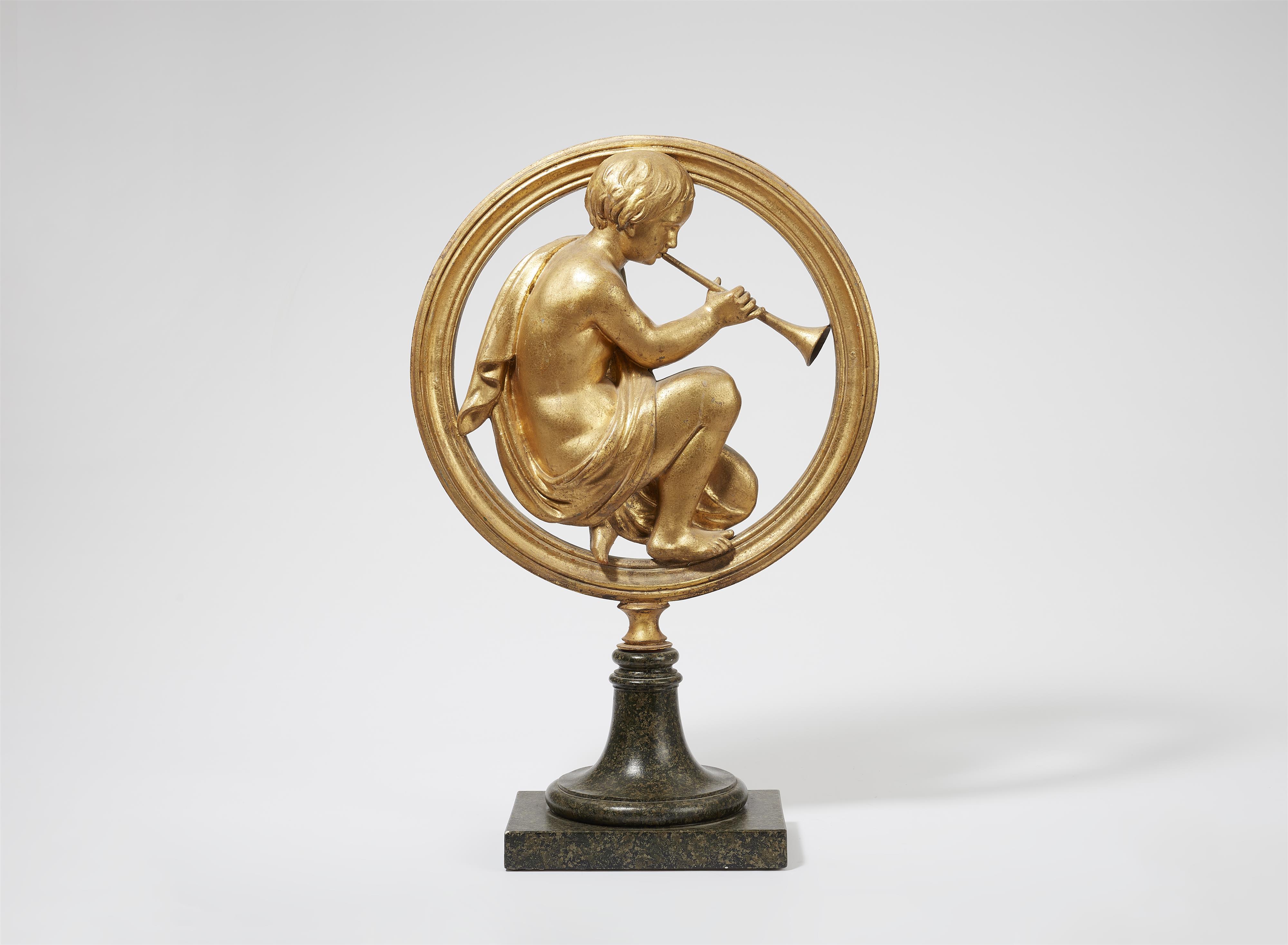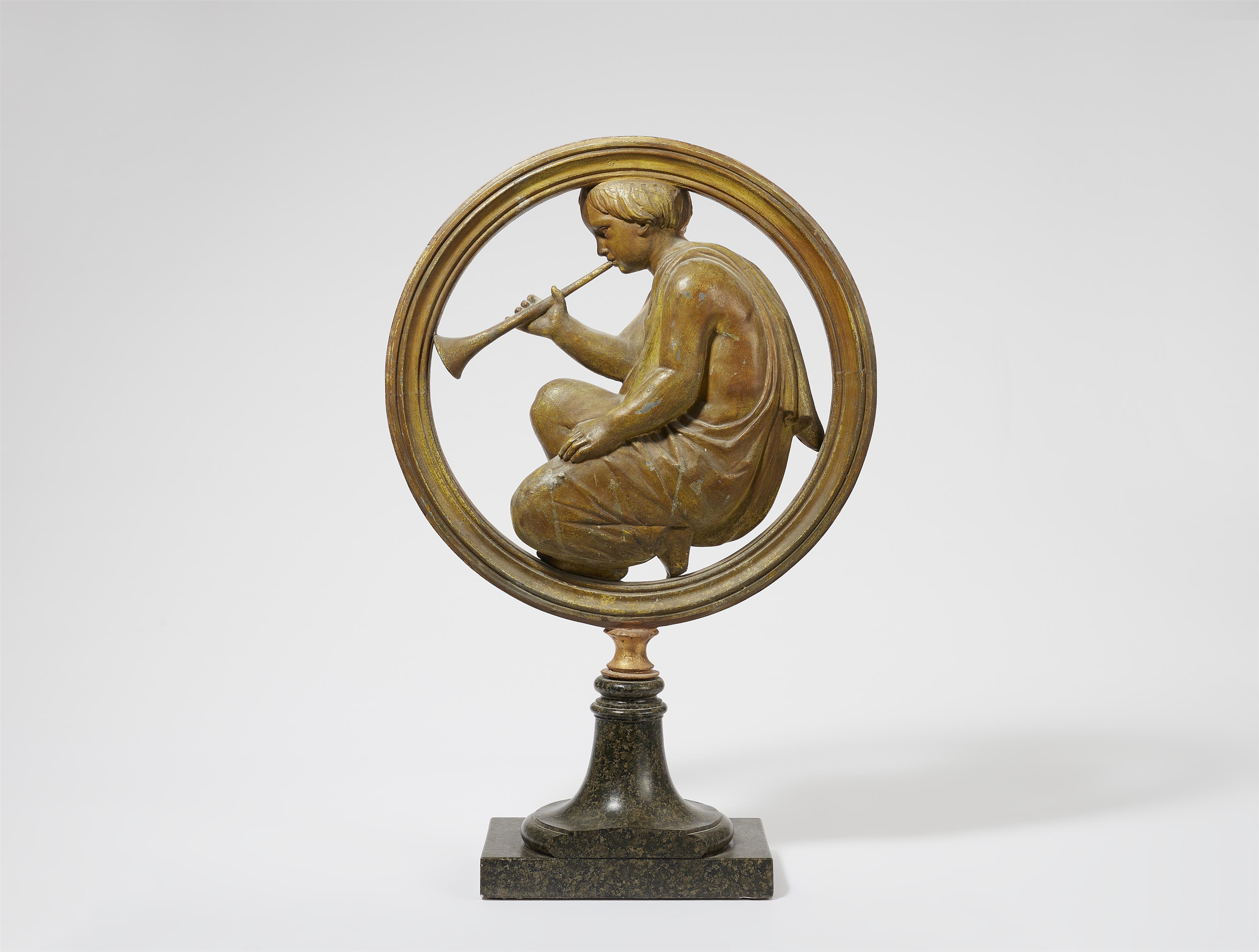A putto making music from the banisters of the Neues Museum in Berlin
Cast and gilded pewter, blackened on the reverse, mounted on a granite covered plinth. H with base 68, D circle 45.5 cm. With a modern pedestal H 101 cm.
Borsigwerke, around 1850, design attributed to Gustav Blaeser, studio of Christian Daniel Rauch.
The Neues Museum was begun in 1841 under the direction of Friedrich August Stüler as the second museum on Museum Island in Berlin-Mitte. Before the laying of the foundation stone on 6th April 1843, work was exclusively dedicated to reinforcing the ground and laying the foundations. Only then did construction begin. The March Revolution delayed the interior work, so that the rooms were only gradually opened as of 1850. The staircase, the decorative design of which was entrusted to Gustav Blaeser, an employee in the studio of Christian Daniel Rauch, formed part of many art-historically significant features of the Neues Museum. Detailed insights into the design of the staircase are provided by the engravings in Stüler's publication "Das Neue Museum zu Berlin", published in 1862 by Ernst & Korn, Berlin. Borsig's skilfully cast balustrade was destroyed during the Second World War. It can be assumed that these putti making music are the only two original elements of the banisters still in existence.
Born in Düsseldorf in 1813, the sculptor Gustav Blaeser began working in Christian Daniel Rauch's studio in Berlin in 1834 and took part in the academy exhibitions as of 1836. Blaeser rose to renown for his portrait reliefs of his fellow artists and of the architect Karl Friedrich Schinkel. Inspired by the Renaissance architectural ceramics of the della Robbia workshop, he chose the tondo format for his portraits, with a moulded frame enclosing relief depictions of his sitters in profile. The same circular frames can also be found in the stylised, pierced figurative depictions chosen for the banisters. The motifs were inspired by the objects from antiquity and ancient Egypt on show at the museum.
Literature
In: Puls, Gustav Hermann Blaeser. Zum Leben und Werk eines Berliner Bildhauers. Mit Werkverzeichnis der plastischen Arbeiten, Cologne1996, p. 253 f., catalogue raisonné no. 75.
Cf. Stüler, Das neue Museum in Berlin mit 24 Tafeln, Berlin 1862, p. 14 ff.
For more on Blaeser see Maaz (ed.), Nationalgalerie Berlin. Bestandskatalog der Skulpturen. Das XIX. Jahrhundert, Berlin-Leipzig 2006, p. 88 ff.




